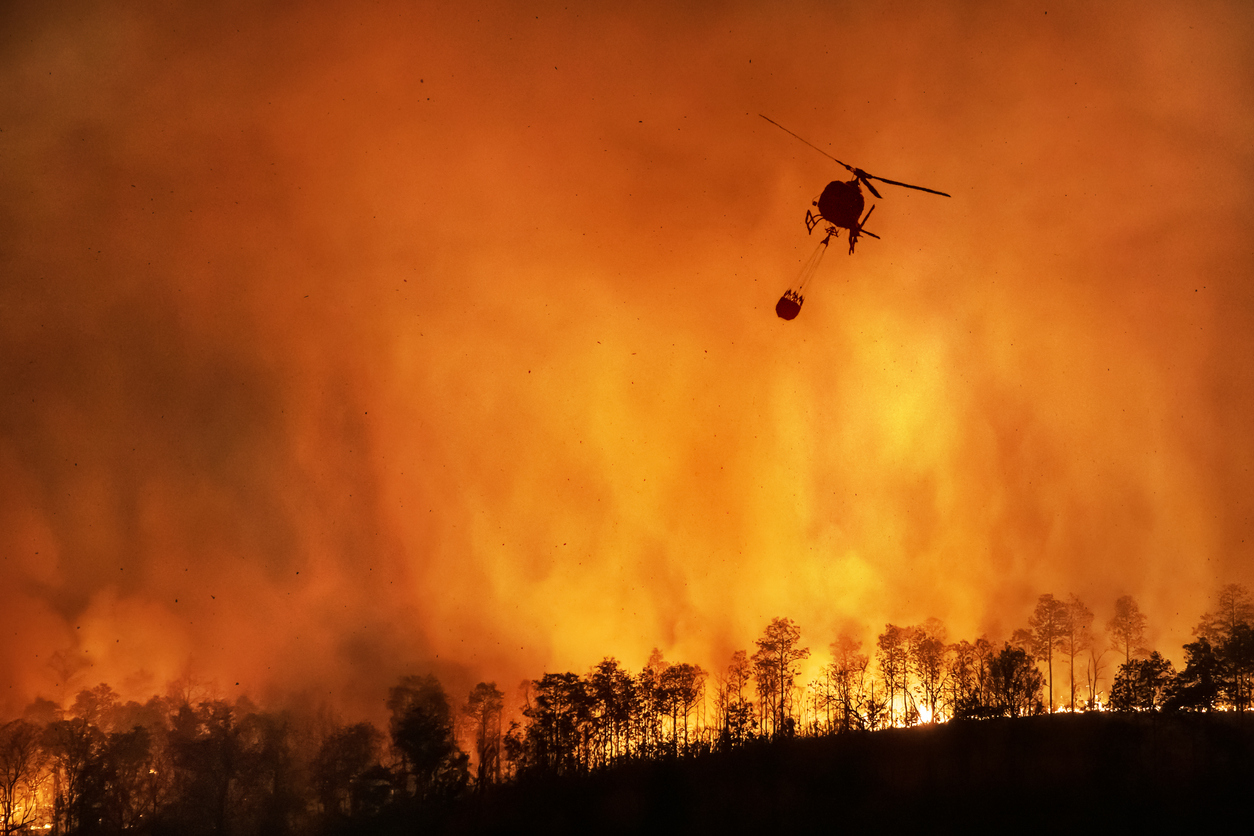According to the researchers, it is part of a very negative positive feedback loop.
"Climate change is fostering conditions that favor larger wildfires. Furthermore, wildfires contribute to the greenhouse gases that cause climate change "Michael Jerrett, a professor in the Department of Environmental Health Sciences at the University of California, Los Angeles, is the study's lead author.
The historic 2020 megafires released an estimated 127 million metric tons of CO2 into the atmosphere. This compares to the 65 million metric tons of greenhouse gas emissions that California was able to reduce between 2003 and 2019, according to the study, which was published in the journal Environmental Pollution this month.
Such feedback loops, such as burning forests and melting permafrost, "have the potential to wipe out a lot of our modest, short-term gains," according to LeRoy Westerling, a climate and wildfire scientist at the University of California, Irvine, who was not involved in the study.
Scientists are increasingly realizing that greenhouse gases emitted by wildfires are a major contributor to climate change.
According to a study Westerling worked on that was published earlier this year in the journal Environmental Research, the 2020 fire year had 15 times the annual average emissions between 1984 and 2015.
He claims that the problem is not limited to California. For years, massive fires have been a growing problem in the West. On Tuesday, for example, a wildfire near the Oregon-Washington border prompted thousands of evacuation orders.
In a double blow, some of the burned forests are dedicated to carbon offset programs. According to Carbon Plan, a nonprofit that maps the overlap of fires and forest projects, Oregon's monster Bootleg Fire in 2021 burned for six weeks, wiping out an estimated 24% of a massive carbon offset project used by Microsoft and others.
Wildfires were the second-largest source of greenhouse gases in California in 2020, trailing only cars and other vehicles. Despite this, greenhouse gases emitted by wildfires are not included in state or federal emission estimates.
This is because forest fires have always been regarded as natural disasters over which humans had no control, and because forests historically regrow and eventually recapture all of the carbon dioxide released when the trees burned.
Those assumptions no longer hold true in the modern world, where the amount of carbon dioxide in the Earth's atmosphere is more than 50% higher than in pre-industrial times.
"We can't keep treating these emissions as if they're carbon neutral, because they're not," Jerrett said. "It makes no difference to the atmosphere where the carbon comes from." Either way, it has the same warming potential."
Forests can take 50 to several hundred years to regenerate. That is time that the Earth does not have as nations scramble to reduce carbon dioxide emissions and keep temperatures from rising above 1.5 degrees Celsius.
In some cases, forests may never regenerate. Because of the warmer, drier climate, what returns in some areas is more like range land or chaparral than the towering forests that once stood there.
According to Jerrett, this makes dealing with wildfires a much larger part of dealing with climate change than previously thought.
"Because they aren't accounted for in the same way that emissions from power plants or automobiles are, there has been a tendency to underinvest in putting out these fires," he explained.
He believes that spending more money on controlled burns and forest management to keep small fires from becoming intense megafires would be ideal.
Climate change has the potential to exacerbate wildfires in California and the West.
According to researchers, a trifecta of human-caused problems means that wildfires in the American West will only grow larger and more intense.
The first is climate change, which is increasing heat and drought in the West and increasing the likelihood of forest fires.
Furthermore, more houses are being built in wilderness and near-wilderness areas, increasing the frequency of human-caused fires.
Finally, more than a century of policies aimed at preventing all wildfires has resulted in the suppression of natural fast, light burns that clear undergrowth and make forests less likely to explode, resulting in extreme fuel buildups when fires do start.
All of this means that monitoring the amount of greenhouse gases released by wildfires is critical, according to Jerrett.
It's also a stark warning, according to Westerling.
"We shouldn't think we can just pull a Hail Mary at the end and somehow fix things at the last second," he said. "We're starting processes that we can't easily undo, which can suffocate the things we're putting in place."
He stated that this is not an argument for doing nothing. "It's a case for acting quickly."













